Illustration by Madalina Pavel (Picturise)
Recognising recognition
How Visible Value can help you navigate the recognition landscape and inspire action
by Darko Marković
 Recognition of youth work
Recognition of youth work
Probably nobody reading this magazine would question the benefits and possible impact youth work has on young people’s social, economic, emotional and political development. Numerous national and European studies have demonstrated youth work’s contribution to young people’s competence development, strengthening democratic and European values, as well as solving some burning social issues like youth violence or mental health issues. So, youth work has a value, for young people, for local communities and for society at large. In some countries in Europe, youth work has a long tradition, while in others it is a novel practice still under development. Depending on the specific situation, the type of recognition needed might differ, but what all these countries have in common is the need for better recognition of youth work and its value.
As indicated in Pathways paper 2.0, youth work resides at the intersection between two fields: the lifelong learning arena and civil society.
This dual nature of youth work constitutes its greatest resource and largest challenge at the same time. It brings tremendous potential to youth workers to address young persons’ development holistically, but at the same time, it brings a challenge to youth work itself to be defined and understood, not fitting easily into existing professional and occupational boxes. Similar difficulty is identified in societal understanding of non-formal education/learning which is considered as one of the core youth work means when working with young people. It is fair to say that many steps have been made towards better validation. However, the concept and legitimacy of non-formal education/learning are still questioned or unknown in many parts of Europe. This makes the challenge for recognition of youth work even harder.
The calls for better recognition of youth work and non-formal education started about 25 years ago, from the European institutions, international youth organisations, local NGOs and individual youth workers themselves. In this period, many recognition-related initiatives have been made, with various degrees of success and sustainability, and altogether they have managed to create a wave of recognition that is still growing and taking more stakeholders on board. This wave was formally formulated in the European Youth Work Agenda, launched in 2020. The Agenda gives the political framework for further youth work development and recognition in the coming years across Europe.
 Visible Value – an online resource library for youth work recognition
Visible Value – an online resource library for youth work recognition
Following the dynamic developments of recognition initiatives across Europe, there was a need to support mutual exchange and learning within the field. Thus, Visible Value 1.0 was created by the Youth Partnership in 2015 as a two-fold resource: a map of the existing recognition tools and a compendium of youth worker stories about the value of their work. The mapping and compendium were updated in 2021. Currently, Visible Value can be considered a comprehensive online resource library about youth work recognition, including the following six sections:
- The section, About recognition, provides some background information on recognition, an explanation of the four areas of recognition, and an animated timeline of the recognition journey.
- There is an updated and more accessible section on Inspiring recognition practices and tools; this section explores each of the selected practices and/or tools with a brief description.
- Recognition stories are focused on the work of different members of the community of practice and how they have contributed to the recognition of youth work – and they come in several different formats.
- National situations provide an overview of what has been or still is happening in each European country towards the recognition of youth work.
- European policy developments is a small section that provides access to the small number of policies that are linked to the subject of the recognition of youth work.
- The Recognition resources section features an assortment of publications, events and web resources from the main European institutions. Each resource is directly or indirectly promoting the recognition of youth work.
 Using Visible Value for youth work recognition in your context
Using Visible Value for youth work recognition in your context
Depending on your interest and the need for recognition of youth work in your context, this resource could be used in various ways. The main purpose of this online library is to inspire and inform, supporting recognition initiatives.
Let’s see some possible scenarios of how Visible Value can support you on the recognition path.
Scenario 1: Recognition as enhanced awareness
Almost everyone working on recognition of youth work would agree that self-recognition is the basis for other forms of recognition, like social, formal or political. In essence, it takes two different directions, towards youth workers themselves and towards young people taking part in the youth work activities.
Source: Youthpass website
For youth workers, it is about stimulating reflection on the value of youth work they are providing for young people, but also for local communities, other stakeholders and society at large. Such reflection could respond to the following questions: what is the real impact our youth work is creating? How do we recognise it and how can we talk about it to others? In that sense, working on recognition is not a separate project, but it can be built in as an additional “awareness layer” in the ongoing youth work.
Secondly, the enhanced awareness is about supporting young people’s awareness and recognition of the benefit their participation in youth work activities has for them and their lives. Most commonly it is about creating reflection tools and spaces for young people to realise and name the competences developed through youth work. Certainly, the most successful and known example of this process is the Youthpass certificate that has been issued to more than 1.5 million participants in Erasmus+ youth work projects. But there are many other tools and resources in Europe with the same idea. You will find many of them in Visible Value’s collection of inspiring tools.
How can Visible Value help?
To stimulate youth workers’ reflection are the Recognition stories from the community of practice and the inspirational practice called In Defence of Youth Work. To support young people’s reflection on the competences developed, in addition to Youthpass, you could also check out ELD from Sweden, ProfilPASS from Germany or Nefiks from Slovenia.
Scenario 2: Recognition as translation
It has been discovered that, in order to achieve better social recognition, awareness of acquired competences is not enough. What is needed is to translate these insights into the language of the “other”, be it other sectors, potential employers, education organisations or state institutions. To overcome the situation of being lost in translation, there were several attempts to create a “translation tool” that can help young people transfer their learning from youth work to other contexts. Many of these tools were driven by supporting better employability of young people through recognition of competencies gained through youth work or volunteering.
How can Visible Value help?
For your inspiration, you may like to check out the practical tool Empower Yourself created by the French Scouts and Guides, or a validation tool developed in Spain called RECONOCE. If you would like to see how you can present the learning outcomes as micro credentials in a digital format, you may wish to learn more about Digital Open Badges. On a policy level, it would be useful to check out the European Council’s Recommendation on the validation of non-formal and informal learning.
Scenario 3: Recognition as an advocacy initiative
Working on recognition of youth work can also be seen as an advocacy initiative in the local or national context. While aims of initiatives can differ, typically they would be about formal recognition of youth work by the formal institutions, reaching better funding opportunities for youth work activities or including youth work in some state strategies and legal acts. So, in brief, it can be about social, economic or political recognition of youth work or all of them at the same time.
How can Visible Value help?
From the Visible Value library you can draw some inspiration from the handbook “Unlocking doors to recognition” to conceive the best recognition strategy for your context. You may also look at some of the research about the impact of youth work and use it to build your case during the recognition initiative or get familiar with the European policies on youth work. One of the concrete examples of how political recognition of youth work might look is in the Youth Work Act from Ireland adopted in 2001.
Scenario 4: Recognition as self-regulation
In some countries, where youth work is not recognised at all, one of the ways to approach it is to initiate the process of self-regulation. In brief, instead of waiting for the institutions to regulate youth work, youth workers themselves take the initiative to “professionalise” their own field. This often means engaging in the process of co-creation of agreed ethical codes, defining youth worker competences, or setting occupational or quality standards. In some cases, it also leads to the establishment of national associations of youth workers that take care of the implementation of the agreed measures and act as a voice for youth workers in communication with the state institutions. Currently, several such associations are working on the establishment of the future European Alliance of Youth Worker Associations.
How can Visible Value help?
A good example of self-regulation can be found in the case of NAPOR – the youth workers association from Serbia, which has been created from scratch and completely bottom-up by youth work organisations. In addition, you may wish to check out the existing youth work competence frameworks, like the European Training Strategy (ETS) Competence Model for Youth Workers, the Council of Europe’s Youth Work Portfolio or the Austrian aufZAQ certification system and competence framework.
 Invitation, instead of conclusion
Invitation, instead of conclusion
These were just some of the examples of recognition scenarios and how Visible Value might be used. In your context, this might look different, based on the needs and challenges youth work and youth workers are facing. Nevertheless, each recognition initiative starts with inspiration about how possible change might look. We hope that Visible Value could be a place to find such inspiration. And when you are done with it, share it with us, so we can put it forward to Visible Value, following one of its main principles that all good recognition initiatives deserve to be shared and multiplied. We need to recognise the recognition too, don’t you think?


